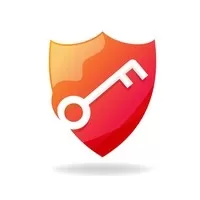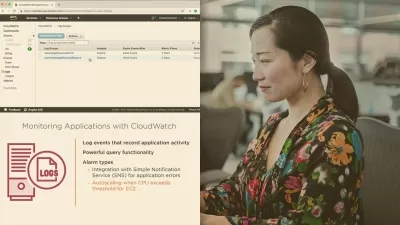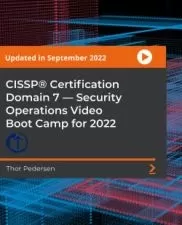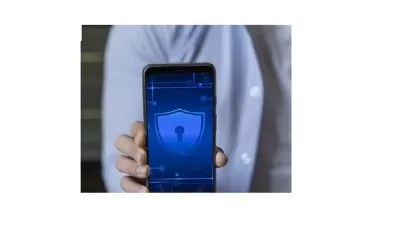Certified Information Systems Security Professional - CISSP
Cybersecurity Certificates
16:54:27
Description
Become a certified information systems security professional and enjoy a bright future.
What You'll Learn?
- Pass the CISSP exam from the first attempt and get you certified.
- Let you master the 8 domains of the CISSP.
- Gain the knowledge required to effectively design, engineer and manage the overall security posture of an organization.
- Best-practice information security management practices, including IS technical skills, risk management and business continuity planning.
Who is this for?
What You Need to Know?
More details
DescriptionThe CISSP Online Course provides a comprehensive review of the knowledge required to effectively design, engineer and manage the overall security posture of an organization. This training course will help students review and refresh their knowledge and identify areas they need to study for the CISSP exam.
Who Should Enroll
The training seminar is ideal for those working in positions such as but not limited to:
Security Consultant
Security Manager
IT Director/Manager
Security Auditor
Security Architect
Security Analyst
Security Systems Engineer
Chief Information Security Officer
Security Director
Network Architect
Course Objectives
After completing this course, the student will be able to:
Understand and apply fundamental concepts and methods related to the fields of information technology and security.
Align overall organizational operational goals with security functions and implementations.
Understand how to protect assets of the organization as they go through their lifecycle.
Understand the concepts, principles, structures and standards used to design, implement, monitor and secure operating systems, equipment, networks, applications and those controls used to enforce various levels of confidentiality, integrity and availability.
Implement system security through the application of security design principles and application of appropriate security control mitigations for vulnerabilities present in common information system types and architectures.
Understand the importance of cryptography and the security services it can provide in today’s digital and information age.
Understand the impact of physical security elements on information system security and apply secure design principles to evaluate or recommend appropriate physical security protections.
Understand the elements that comprise communication and network security coupled with a thorough description of how the communication and network systems function.
List the concepts and architecture that define the associated technology and implementation systems and protocols at Open Systems Interconnection (OSI) model layers 1-7.
Identify standard terms for applying physical and logical access controls to environments related to their security practice.
Appraise various access control models to meet business security requirements.
Name primary methods for designing and validating test and audit strategies that support business requirements.
Enhance and optimize an organization’s operational function and capacity by applying and utilizing appropriate security controls and countermeasures.
Recognize risks to an organization’s operational endeavors and assess specific threats, vulnerabilities and controls.
Who this course is for:
- YOU
- IT professionals seeking to enhance their careers and gain credibility as information security specialists
The CISSP Online Course provides a comprehensive review of the knowledge required to effectively design, engineer and manage the overall security posture of an organization. This training course will help students review and refresh their knowledge and identify areas they need to study for the CISSP exam.
Who Should Enroll
The training seminar is ideal for those working in positions such as but not limited to:
Security Consultant
Security Manager
IT Director/Manager
Security Auditor
Security Architect
Security Analyst
Security Systems Engineer
Chief Information Security Officer
Security Director
Network Architect
Course Objectives
After completing this course, the student will be able to:
Understand and apply fundamental concepts and methods related to the fields of information technology and security.
Align overall organizational operational goals with security functions and implementations.
Understand how to protect assets of the organization as they go through their lifecycle.
Understand the concepts, principles, structures and standards used to design, implement, monitor and secure operating systems, equipment, networks, applications and those controls used to enforce various levels of confidentiality, integrity and availability.
Implement system security through the application of security design principles and application of appropriate security control mitigations for vulnerabilities present in common information system types and architectures.
Understand the importance of cryptography and the security services it can provide in today’s digital and information age.
Understand the impact of physical security elements on information system security and apply secure design principles to evaluate or recommend appropriate physical security protections.
Understand the elements that comprise communication and network security coupled with a thorough description of how the communication and network systems function.
List the concepts and architecture that define the associated technology and implementation systems and protocols at Open Systems Interconnection (OSI) model layers 1-7.
Identify standard terms for applying physical and logical access controls to environments related to their security practice.
Appraise various access control models to meet business security requirements.
Name primary methods for designing and validating test and audit strategies that support business requirements.
Enhance and optimize an organization’s operational function and capacity by applying and utilizing appropriate security controls and countermeasures.
Recognize risks to an organization’s operational endeavors and assess specific threats, vulnerabilities and controls.
Who this course is for:
- YOU
- IT professionals seeking to enhance their careers and gain credibility as information security specialists
User Reviews
Rating
Cybersecurity Certificates
Instructor's Courses
Udemy
View courses Udemy- language english
- Training sessions 135
- duration 16:54:27
- English subtitles has
- Release Date 2022/11/22















